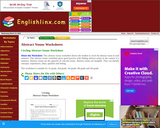
Students will circle the abstract noun in each sentence and will write a sentence with each abstract noun provided.
- Subject:
- English Language Arts
- Material Type:
- Activity/Lab
- Provider:
- Englishlinx.com
- Date Added:
- 02/26/2019

Students will circle the abstract noun in each sentence and will write a sentence with each abstract noun provided.
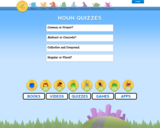
Students will review abstract and concrete nouns by answering multiple choice questions about each noun type.
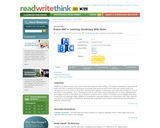
Students can work together to brainstorm and create lists of verbs for each of the letters of the alphabet in this interactive activity. Then, choosing one verb for each letter, or letters of their choice, they can create pages for an Action Alphabet book. Each page includes an illustration and a sentence using the verb in context or students can create a chart with all of the verbs listed.

Sstudents write the correct tense of each action verb to match the rest of each sentence.

Students choose a phrasal verb from a word bank to complete the sentences.
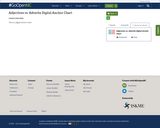
This is a digital anchor chart.
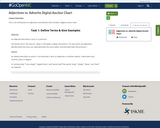
This is an introduction to adjectives and adverbs that includes a digital anchor chart.

In this activity, students will invent crazy plants as they put together new combinations of nouns, verbs, and adjectives. They will be amazed when you introduce real living plants that have adaptations as bizarre as the ones they have created. Then they will create their own alien plants. Students will recognize that invasive species are equipped with adaptations that give them competitive advantages over native species.
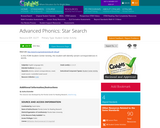
Students will identify variant correspondences in words. Reproducible materials are included in the PDF.
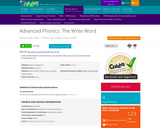
Sttudents will produce words with variant correspondences. Reproducible materials are included in the PDF.

This resource, which is a direct download, is a lesson plan for "Aero and Office Mike" by Joan Plummer Russell. "Aero and Officer Mike is an informational text about a police officer and his partner, a dog named Aero. Information about their daily routine, Aero's special talents, and Officer Mike's training is included.

In this lesson, students read Aunt Flossie's Hats to learn about family traditions and stories and how they keep families united across generations. Students discuss the text and respond to questions using the text to support their answers. Lesson opens to a Word document.
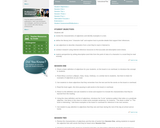
In this lesson, students explore adjectives through a read-aloud and develop a working definition of the term. They list as many adjectives as they can, then combine them with "to be" verbs to create simple sentences. Next, they are introduced to character traits by putting the adjectives from their list in the context of a character from a shared reading. They then use an online chart to equate the character traits with specific actions the character takes. Finally, students "become" one of the major characters in a book and describe themselves and other characters, using Internet reference tools to compile lists of accurate, powerful adjectives supported with details from the reading. Students read each other's lists of adjectives and try to identify who is being described.
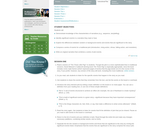
A strong plot is a basic requirement of any narrative. Students are sometimes confused, however, by the difference between a series of events that happen in a story and the plot elements, or the events that are significant to the story. In this lesson, students select a topic for a personal narrative and then do the prewriting in comic-strip format to reinforce the plot structure. Finally, they write their own original narratives based on the comic strip prewriting activity, keeping the elements of narrative writing in mind. This lesson uses a version of "The Three Little Pigs" fairy tale to demonstrate the literary element; however, any picture book with a strong plot would work for this lesson.
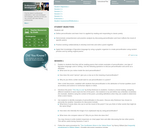
Experiencing the language of great poets provides a rich learning context for students, giving them access to the best examples of how words can be arranged in unique ways. By studying the works of renowned poets across cultures and histories, students extract knowledge about figurative language and poetic devices from masters of the craft. In this lesson, students learn about personification by reading and discussing poems that feature this writing device. Then they use the poems as a guide to brainstorm lists of nouns and verbs that they randomly arrange to create personification in their own poems.
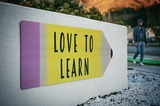
As a way to support teachers with English Language Arts (ELA) instruction during the pandemic, the NCDPI ELA team created choice boards featuring standards-aligned ELA activities.The intended purpose of these choice boards is to provide a way for students to continue standards-based learning while schools are closed. Each activity can be adapted and modified to be completed with or without the use of digital tools. Many activities can also be repeated with different texts. These standards-based activities are meant to be a low-stress approach to reinforcing and enriching the skills learned during the 2019-2020 school year. The choice boards are to be used flexibly by teachers, parents, and students in order to meet the unique needs of each learner.Exploration activities are provided for a more self-directed or guided approach to independent learning for students. These activities and sites should be used as a way to explore concepts, topics, skills, and social and emotional competencies that interest the learner.

Students will gain an understanding of using contractions in speaking and in written text. They will identify word pairs used to make contractions and create contractions appropriately. They will also have a better understanding of how certain grammatical structures, like contractions, contribute to the overall understanding of a text.

The goal of the first component of this unit design is to connect new learning and language to prior knowledge and build students’ background and interest of global poverty. They will begin to investigate the world and recognize perspectives by learning and thinking about the essential questions for the unit: What is poverty? What are some causes of poverty? What are the effects of poverty of children? Students are engaged in a variety of visual literacy tasks where speaking, listening and writing begin to occur through the support of graphic organizers and prompt cards with sentence frames linked to the speaking and listening standards (Zwiers 2008). This lesson was developed by Karie Gregory as part of their completion of the North Carolina Global Educator Digital Badge program. This lesson plan has been vetted at the local and state level for standards alignment, Global Education focus, and content accuracy.

In this module, students consider the guiding question: How do writers capture a reader's imagination? as they take a deep study of the classic tale Peter Pan.
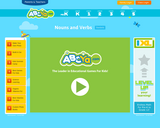
This resource contains three different choices for interactive games: nouns, verbs, or nouns and verbs. Students will help a monkey collect 10 scoops of ice cream by finding nouns and verbs in the sentences provided.